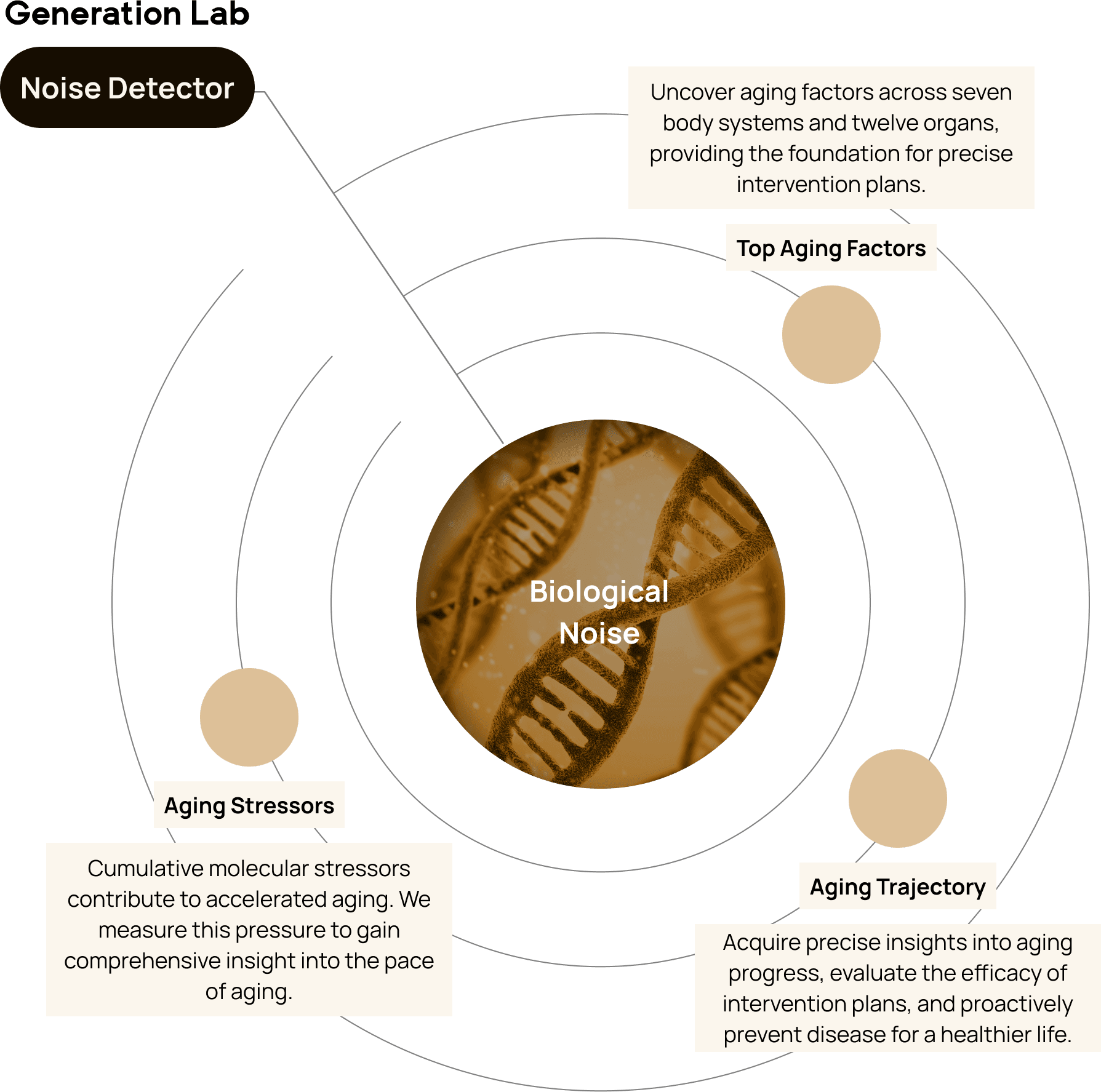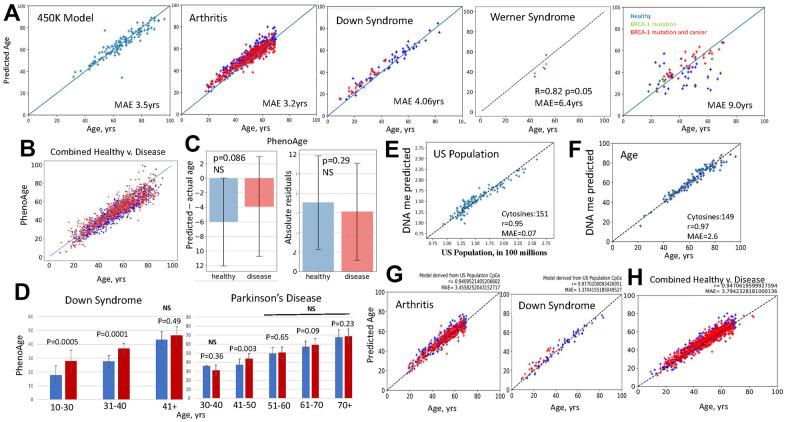We Now Know Why We Age
Backed by the world’s top longevity scientists, Generation Lab offers the most accurate and comprehensive view into aging and longevity ever.
A Groundbreaking New Approach to Longevity.
Our test serves as a DNA methlyation detector, identifying biological noise across the most important body organs and systems. This is the most comprehensive genomics test ever to hit the market.
Aging measurement based on biomolecular evidence.
Identify the 460+ gene markers that identify causes of aging.
Part of a Biobank for Aging to help prevent disease and extend lifespan.
Biological Radar that Unlocks Your Full Potential
Biological Noise
We measure the level of noise and key biomarkers across the most important parts of your body.
Noise Detector
Serves as a noise barometer for measuring epigenetic pressure associated with aging and disease.

DNA Methylation & Aging
DNA methylation, the addition of methyl groups to DNA, regulate gene expression. Excessive methylation over time disrupts gene function and genome stability, contributing to various diseases.
By understanding methylation level, we can mitigate the risk of disease onset. We couple this information with personalized interventions and treatments tailored to individual genetic profiles.
We measure your biological age across 19 systems & organs
Read More in Published Research Papers

“Fail-tests of DNA methylation clocks, and development of a noise barometer for measuring epigenetic pressure of aging and disease”
“Rejuvenation of aged progenitor cells by exposure to a young systemic environment”
“Notch-mediated restoration of regenerative potential to aged muscle”
“Detection of unamplified target genes via CRISPR–Cas9 immobilized on a graphene field-effect transistor”
Causes of Aging
Mitochondrial Dysfunction
As we age, the mitochondria, which are the cell's powerhouses, begin to malfunction. This leads to reduced cellular and organ performance compared to youth.
Cellular Senescence
Senescent cells, once healthy, cease to divide and release harmful substances that damage neighboring healthy cells. Often termed 'zombie cells', their accumulation with age accelerates tissue and organ deterioration.
Loss of Proteostasis
Over time, more and more proteins accumulate inside and outside our cells. These proteins should be cleaned up, and when they aren’t, interfere with the cells’ proper functioning.
Altered Cellular Communication
As we age, our cells face a challenging environment filled with pro-inflammatory and harmful substances, impairing their proper function, including that of stem cells.
Genomic Instability
During aging, our DNA becomes damaged, especially in stem cells and fast-dividing cells. Damaged DNA may result in improper cell function which impacts proper functioning of tissues and organs.
Epigenetic Alterations
As we age, the epigenome, responsible for regulating gene activity, becomes disorganized. This can result in beneficial genes being silenced when they should be active, and harmful genes being activated when they should remain inactive.
Telomere Shortening
As we grow older, the protective caps at the ends of our chromosomes, called telomeres, naturally shorten. This shortening diminishes their ability to safeguard our DNA, potentially raising the risk of genomic instability and hindering cellular function.
Deregulated Nutrient Sensing
During aging, our cells become less tuned to nutrient signals, which disrupts a cell’s ability to utilize and produce energy. This can result in reduced energy and metabolic dysfunction.
Stem Cell Exhaustion
As we age, stem cells either lose functionality or decline in number. Since stem cells play a crucial role in generating new cells as needed, a reduction in their quantity or function results in less effective tissue replenishment and maintenance over time.
Disabled Macroautophagy
Macroautophagy impairment happens when cells fail to undergo a process called autophagy, which is essential for cellular self-cleaning. This failure results in the buildup of damaged or dysfunctional cellular components and is linked to conditions such as cancer, metabolic issues, and neurological
Inflammaging
Inflammaging is a chronic, low-grade inflammatory state that occurs as part of aging, and can be influenced by lifestyle factors. It can contribute to age-related diseases, including cardiovascular disease, diabetes, and neurodegenerative disorders.
Microbiome Dysbiosis
Dysbiosis is a disruption in the normal microbial community that inhabits an environment, like our guts. It can lead to digestive disorders, immune system dysfunction, and increased risk of infection and chronic disease.
201 Spear St
SF, California
94105
info@generationlab.co
© 2024 Generation Lab. All rights reserved.